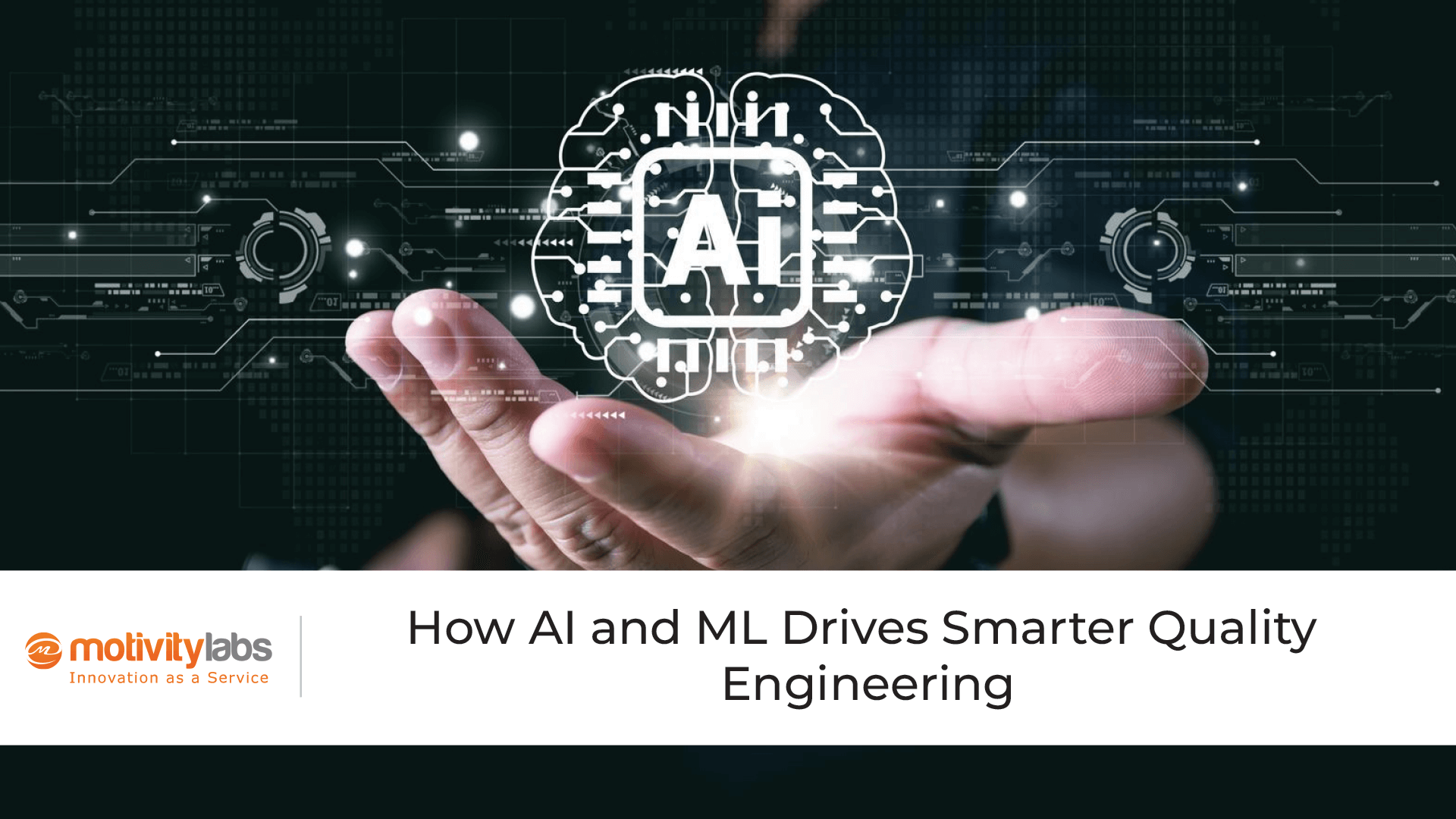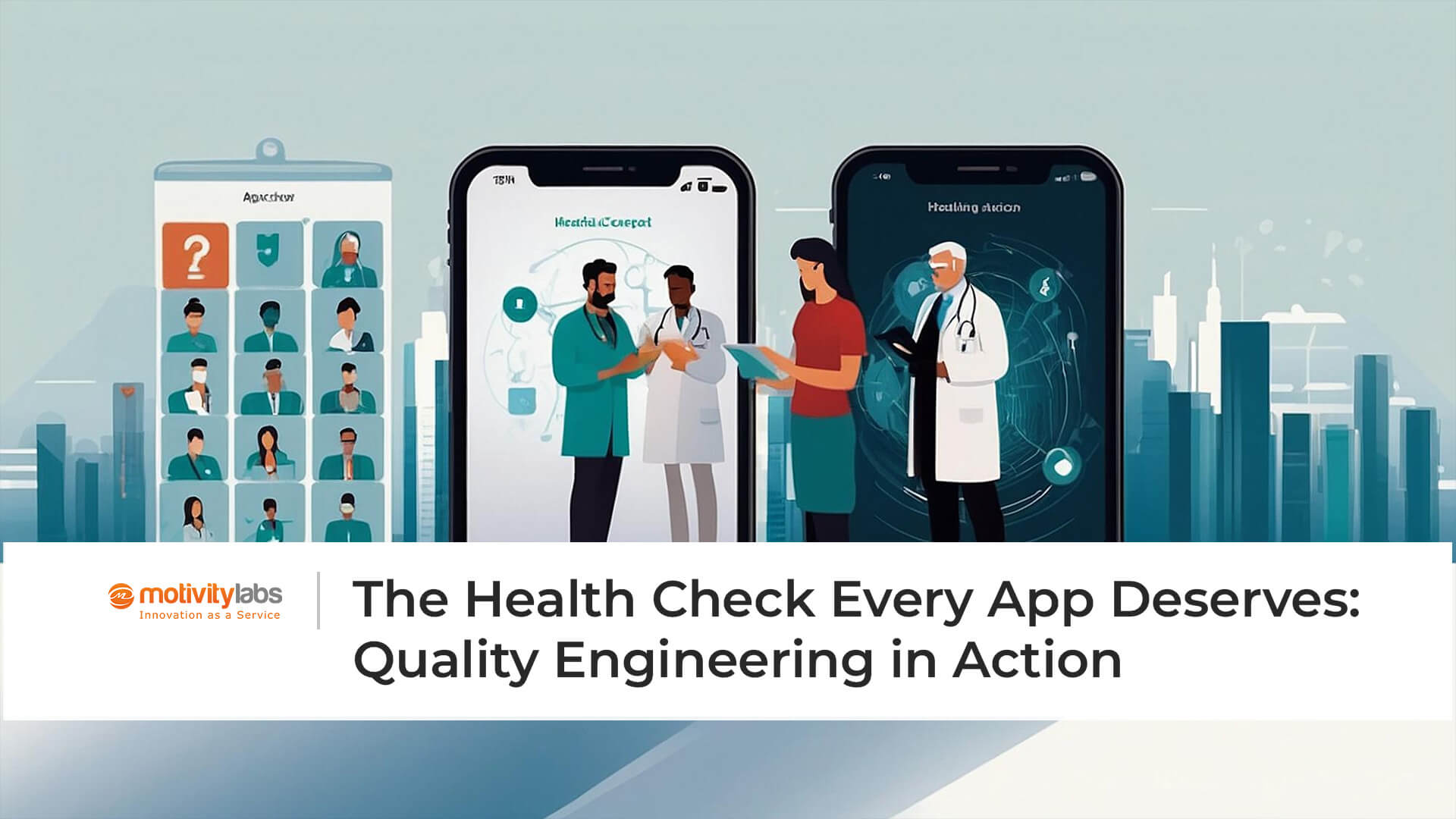In 2025, Quality Engineering is no longer just about detecting bugs, it’s about predicting them. AI and ML are transforming testing into a proactive, intelligent process, enabling teams to anticipate issues, optimize coverage, and improve software quality before defects arise. This evolution goes beyond technology; it reshapes how organizations approach quality, balancing speed, reliability, and innovation. The key question today isn’t whether to adopt AI in QA- it’s how quickly teams can leverage it effectively to stay ahead.
Smarter, Faster, Predictive Testing
The role of AI and ML in test automation is particularly transformative. Recent studies reveal that 73% of respondents cite AI and ML as key drivers of progress in automated testing. These technologies analyze historical defect patterns, identify high-risk modules, and even generate optimized test scenarios automatically, reducing human intervention while improving accuracy.
Cloud-native technologies and robotic process automation (RPA) complement AI/ML adoption, with 67% and 66% of organizations leveraging these advancements, respectively. Together, these tools create a more intelligent, adaptive testing environment, enabling Quality Engineering teams to focus on strategic decision-making rather than repetitive tasks.
AI-powered test automation doesn’t just speed up testing; it also improves precision. Machine learning algorithms can identify patterns in complex codebases that might elude human testers. By predicting where defects are likely to occur, teams can prioritize testing efforts, reduce redundancy, and ensure critical components are rigorously validated. This predictive, data-driven approach is revolutionizing how organizations define and deliver quality.
Automation Adoption: The Rising Tide
Automation adoption is accelerating rapidly. According to industry surveys, 72% of organizations now prioritize quality assurance, and 65% focus specifically on test automation efficiency. This growing emphasis underscores a broader transformation: Quality Engineering is no longer reactive—it’s becoming proactive, predictive, and strategic.
Automation frees teams from repetitive, time-consuming testing tasks, allowing them to concentrate on exploratory testing, scenario design, and critical quality planning. AI/ML-driven insights help teams detect defects earlier, optimize test coverage, and reduce risk, ultimately enhancing product reliability and shortening release cycles.
Moreover, automation isn’t just a technological upgrade—it’s a business imperative. Organizations that integrate AI-driven automation into their QA processes can respond faster to market demands, scale their operations effectively, and maintain higher quality standards. Quality Engineering teams are now measured not just by defect detection but by their ability to anticipate and prevent potential issues proactively.
Predictive Insights: From Data to Decisions
One of the most compelling benefits of AI and ML in Quality Engineering is predictive intelligence. Machine learning models can analyze historical defect data, usage patterns, and code changes to forecast potential problem areas in upcoming releases. This predictive capability ensures that high-risk modules receive prioritized attention, optimizing both resources and test coverage.
Predictive insights also enhance decision-making across the software development lifecycle. By identifying trends and patterns in defects, organizations can implement process improvements, adjust development priorities, and reduce the likelihood of recurring issues. In this way, AI and ML transform Quality Engineering from a reactive checkpoint to an integral component of strategic planning.
As systems grow more complex, predictive QE becomes essential. AI-driven analytics can identify subtle patterns and anomalies that human testers might miss, providing early warnings and actionable recommendations. This proactive approach reduces costs, improves product reliability, and accelerates time-to-market, creating tangible business value.
The Edge of Continuous Improvement
Modern software systems demand continuous improvement. Microservices, distributed architectures, and frequent releases mean that traditional testing approaches cannot keep pace. AI and ML introduce continuous learning loops into Quality Engineering, where every test, defect, and deployment contributes to smarter, more adaptive models.
These adaptive models enhance testing efficiency by continuously refining test suites based on prior results. They help teams identify redundant or ineffective tests, improve coverage for high-risk areas, and optimize resource allocation. As a result, Quality Engineering evolves from a static, point-in-time process to a dynamic, intelligence-driven discipline.
Continuous improvement also extends to risk management. AI/ML can detect patterns of recurring failures, identify dependencies, and predict potential bottlenecks before they impact users. By embedding predictive capabilities into CI/CD pipelines, organizations can maintain high-quality standards without compromising release velocity.
Why AI and ML are Non-Negotiable
The business case for AI and ML in Quality Engineering is clear. Organizations that ignore these technologies risk falling behind competitors in speed, efficiency, and reliability. AI-driven QE ensures:
- Faster release cycles with fewer defects
- Optimal utilization of testing resources
- Predictive insights for risk mitigation
- Continuous improvement and actionable intelligence
Beyond operational efficiency, AI and ML support innovation. By reducing the burden of repetitive testing, QE teams can focus on creative problem-solving, scenario exploration, and process optimization. This shift strengthens the organization’s ability to deliver superior software products and enhanced user experiences.
Leveraging Motivity Labs for Smarter Quality Engineering
Motivity Labs’ solutions take AI and ML-enabled Quality Engineering to the next level. By integrating predictive analytics, intelligent test prioritization, and anomaly detection into CI/CD pipelines, Motivity Labs helps organizations proactively identify risks and optimize testing efforts. Key benefits include:
- Predictive dashboards that provide actionable insights for QA teams
- Anomaly detection to flag potential defects before they occur
- Intelligent test prioritization to maximize efficiency and reduce resource waste
- Seamless CI/CD integration to maintain rigorous quality standards without slowing development
With Motivity Labs, Quality Engineering teams can transition from reactive testing to strategic quality management, ensuring faster releases, higher reliability, and better overall product outcomes. Organizations leveraging these solutions can make data-driven decisions confidently, reduce costs, and achieve superior software quality.
Conclusion: From Reactive to Revolutionary
AI and ML are redefining Quality Engineering, moving it from a reactive, error-finding function to a predictive, autonomous, and continuous quality assurance practice. By adopting intelligent automation, predictive insights, and adaptive testing strategies, organizations can accelerate release cycles, reduce defects, and optimize resources.
With solutions like those offered by Motivity Labs, Quality Engineering becomes a strategic differentiator, not just a technical requirement. The future belongs to organizations that harness AI and ML effectively, turning every test, deployment, and data point into actionable insights.
In 2025 and beyond, smarter Quality Engineering isn’t just an operational improvement—it’s a competitive advantage, enabling organizations to deliver higher-quality products faster, more efficiently, and with greater confidence.



